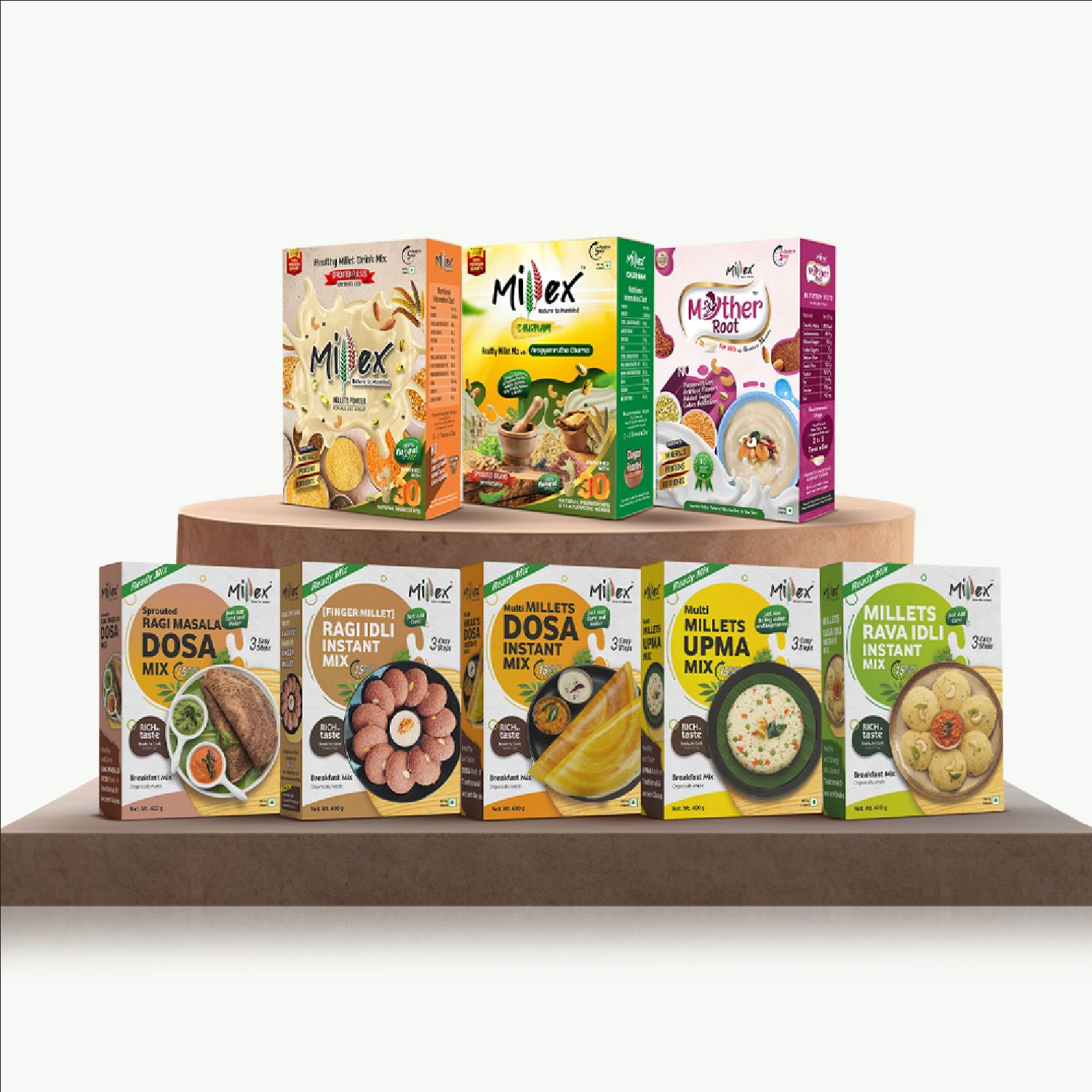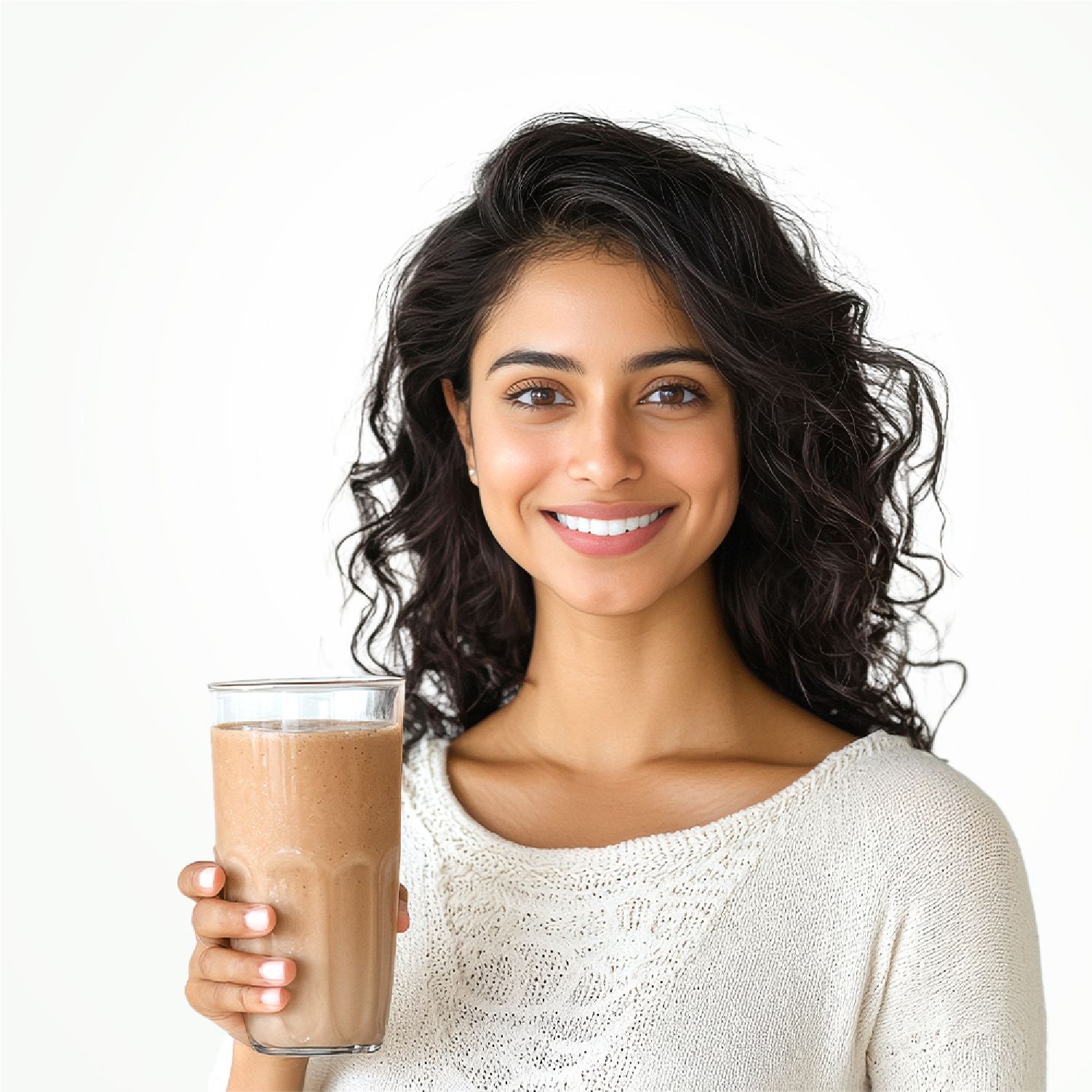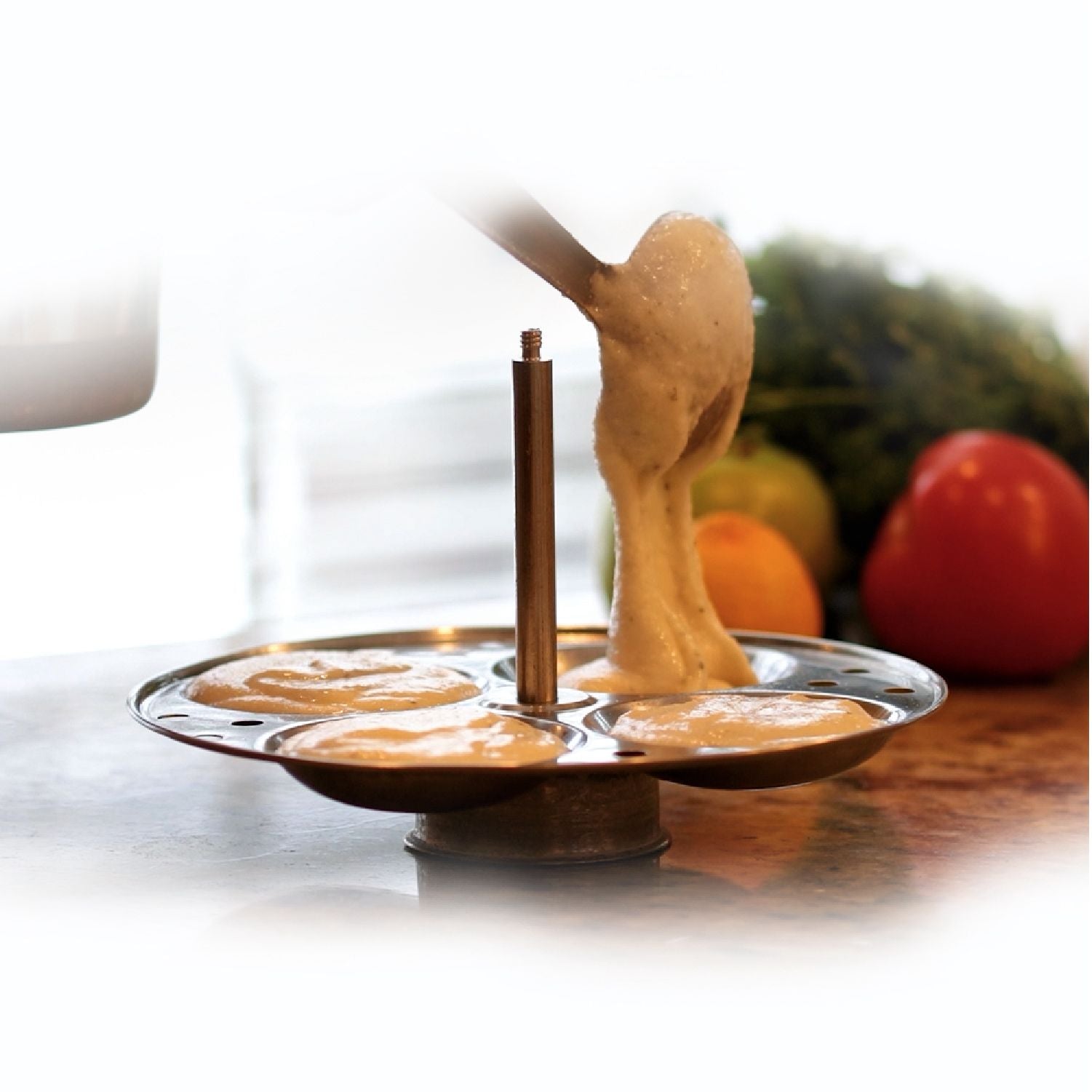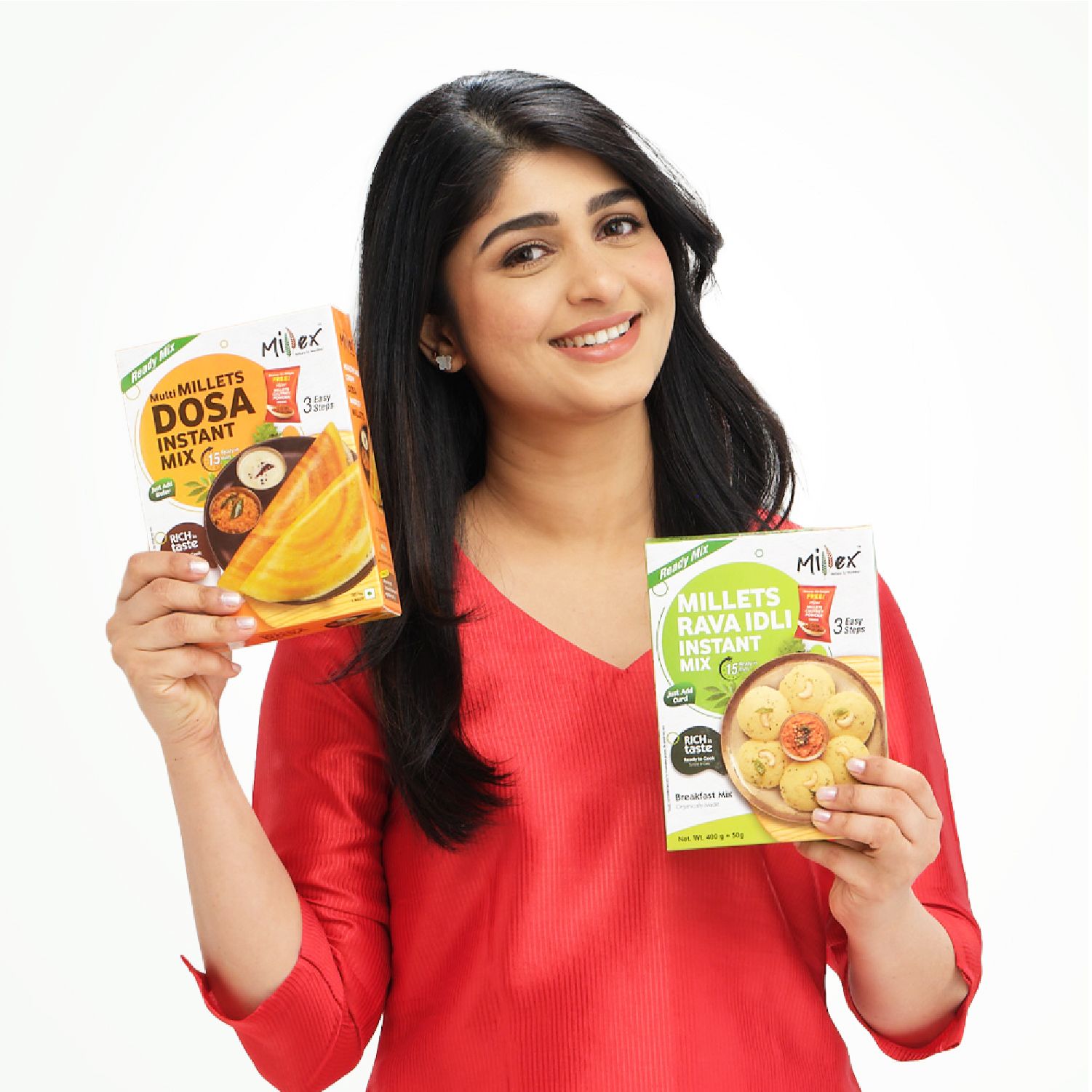Ragi dosa is a perfect blend of taste and health, supporting blood sugar balance, weight management, and overall wellness. With Millex Sprouted Ragi Masala Dosa Mix, you can enjoy a quick, delicious, and diabetic-friendly breakfast every morning.
Struggling to balance flavour and fitness at breakfast? Ragi simplifies mornings. This healthy grain is packed with fibre, protein, and minerals that stabilise blood sugar and increase energy. Its inherent goodness converts every dosa into a healthy snack that fills hunger without leading to glucose spikes.

Ragi Dosa Mix
Millex brings all this nutrition to your table via its Sprouted Ragi Masala Dosa Mix, a simple and tasty breakfast solution. The ragi dosa mix for diabetics is a perfect blend of traditional taste with contemporary convenience, which is suitable for diabetes and health-conscious food lovers. Have a perfectly balanced, blood sugar-friendly breakfast that tastes homemade with each serving.
Nutritional Value of Ragi
● Rich in Calcium and Potassium
Ragi has much more calcium and potassium content than most grains and other types of millet. Calcium is important for bone strength and can prevent diseases such as osteoporosis, and potassium aids the heart and healthy blood pressure. Daily intake of ragi can help in sustaining healthy bones and cardiovascular systems, particularly in communities with limited access to calcium-rich foods.
● Nutrient-Dense and Long-Lasting
Finger millet is rich in nutrients, providing protein, dietary fibre, and minerals. Its durability and resistance to drought ensure that it can be stored and utilised in many dishes for a long time. There are traits that ensure ragi is sustainable for households and communities, especially when there’s food insecurity or weather instability.
● Prebiotic Characteristics and Fermentation Benefits
Ragi can include prebiotics, which support beneficial gut bacteria and digestion. Fermenting ragi flour can add to its nutritional value by boosting protein content, enhancing essential amino acid composition, and lowering phytic acid content. Phytic acid inhibits the absorption of minerals, so fermentation enhances nutrient bioavailability, making ragi a still healthier grain.

Ragi Idli Mix
Ragi and Diabetes Management
● Understanding Diabetes
Diabetes is a global health concern that impacts more than 422 million individuals. Diabetes develops when insulin production or activity is impaired, and as a result, blood sugar levels are constantly elevated.
Uncontrolled high blood sugar for an extended period may bring about various complications, including kidney problems, eye issues, heart disease, and stroke. The proper selection of food is essential in achieving a healthy balance of glucose levels, and grains are an important part of this process.
● Ragi as a Diabetic-Friendly Grain
Ragi is a great substitute for processed grains such as white rice because it is rich in fibre and minerals. Its slow-burning carbohydrates release glucose slowly, avoiding the peaks and troughs of blood sugar.
New studies suggest that daily ragi intake could also have a beneficial effect on cholesterol levels and overall metabolic well-being. The high nutrient content, along with high fibre and polyphenols of ragi dosa for blood sugar control, makes it especially ideal for managing diabetes.
● Role of Polyphenols
Finger millet is a storehouse of polyphenols, plant compounds with antioxidant activity. Polyphenols can possibly prevent diabetes-related complications by alleviating oxidative stress and inflammation in the body.
Animal studies show that diets incorporating ragi can reduce blood glucose and markers for kidney function. While human trials are scarce, these results point towards promising gains for frequent consumption.
● Fibre and Regulation of Blood Sugar
Dietary fibre plays an important role in regulating blood glucose. The rich fibre content in ragi retards the digestion and absorption of glucose, leading to a gradual release of energy and a lowering of post-meal spikes in blood sugar.
Fibre also produces a feeling of fullness, which can facilitate weight control and prevent type 2 diabetes. Incorporating ragi-based foods such as dosa into daily meals provides a fibre-enriched, diabetic-friendly breakfast.
Anti-Inflammatory and Antioxidant Effects
● Decreasing Oxidative Stress
Chronic inflammation and oxidative stress are associated with diseases like diabetes, cardiovascular disease, and certain cancers. Ragi is rich in antioxidants, which can potentially mop up free radicals, thus aiding the body in protection against oxidative stress.

Millet Dosa Mix
Animal trials demonstrate that diets containing millet improve antioxidant status, heal wounds, and normalise blood glucose, with potential therapeutic applications.
● Supporting Overall Health
Although most studies are animal-based, they highlight ragi’s ability to support metabolic and immune functions. Regular consumption may enhance the body’s response to inflammation and oxidative stress, promoting long-term health benefits and reducing the risk of chronic diseases.
Preparing Ragi Dosa: Step-By-Step Guide
Ingredients
● 1 cup ragi flour (finger millet)
● ¼ cup rice flour
● ¼ cup sour curd
● 1 onion, finely chopped
● 1 green chilli, finely chopped
● 1 tablespoon coriander leaves, finely chopped
● Cooking oil for shallow frying
● 1 ½ cups water
● Salt to taste
For tempering
● ¼ teaspoon mustard seeds
● ½ teaspoon cumin seeds
● 5-7 curry leaves
● 1 teaspoon oil
Making the Batter
● Combine ragi flour, rice flour, chopped green chilli, and sour curd in a large mixing bowl.
● Gradually add water and salt, mixing to form a batter with pourable consistency like buttermilk. Set aside for 30 minutes to rest.
● Add chopped onions and coriander leaves for extra flavour and nutrition.
Tempering Process
● Heat oil in a pan. Add mustard seeds and allow them to crackle before adding cumin seeds and curry leaves. Remove from the flame and pour over the batter.
● Mix the batter nicely before cooking.
Cooking Ragi Dosa
● Heat a non-stick tawa on a medium flame. Pour a ladleful of batter in a circular motion, leaving tiny gaps for even cooking.
● Drizzle oil around the edges with one teaspoon of oil and cook until the surface becomes light brown.
● Flip gently and cook the other side for 30 to 40 seconds. Serve hot with sambar or chutney.
Tips for Perfect Ragi Dosa
● Make the batter slightly watery for crispy dosas.
● Use a non-stick tawa to avoid sticking.
● Add grated vegetables, capsicum, or carrots for high nutritional content.
● Try adding turmeric or ginger paste for extra health benefits.
● Prepare the batter in advance and store it in the refrigerator for 2-3 days for convenience.
● Experiment with adding a teaspoon of soaked chia seeds or flax seeds to the batter for added fibre and omega-3 fatty acids.
● To get a hint of tangy flavour, ferment the batter a little longer at room temperature before cooking.
Shallow frying using ghee or coconut oil for added flavour and heart-healthy fats.
Meal Ideas with Ragi Dosa

Breakfast Variations
● Serve dosa with coconut chutney or tomato chutney for extra flavour.
● Serve with vegetable sambar for a fibre-dense, satisfying meal.
● Mix finely chopped vegetables right into the batter for increased nutrition.
● Make mini dosas for kids or a quick breakfast.
Snack Ideas
● Use ragi dosa as a snack in the evening with spiced yoghurt or chutney.
● Stuff dosa with sauteed vegetables or paneer for a protein-based meal.
● Make bite-sized rolls filled with varied fillings for variety.
● Serve as finger food during family get-togethers or children’s parties.
Dinner and Meal Planning
● Pair dosas with lentil soups or stews to create a healthy dinner.
● Alternating ragi with other millets to diversify nutrients in daily meals.
● Freeze cooked dosas and use them later, these being warmed on tawa for crispiness.
● Include portion control and complementing high-protein sides to ensure blood sugar balance.
● Make ragi idlis, pancaes, or uttapas using leftover dosa batter for meal variety.
Ragi Dosa for Kids and Diabetes
Ragi dosa is ideal for children and adults managing diabetes. Its mild taste, crispy texture, and versatility make it appealing while providing high fibre and essential nutrients. Adding vegetables increases vitamins, antioxidants, and minerals, ensuring a balanced breakfast.
Regular inclusion in daily meals supports energy levels, growth, and metabolic health. Mixing ragi dosa with other whole foods like sprouts, paneer, or lentils results in a wholesome meal that aids blood sugar regulation and nutrition, and hence is a healthy and convenient option for the whole family.
Nutritional Insights
● Protein and Amino Acids
Fermented ragi flour has greater protein content than plain flour. Essential amino acids contribute towards muscle repair, metabolism, and overall energy generation. This combination of protein and fibre makes ragi dosa a perfect blood sugar-friendly breakfast for day-long energy.
● Vitamins and Minerals
Ragi is a rich source of calcium, potassium, and iron, which support bone strength, muscle function, and blood health. Regular ragi dosa consumption will prevent typical nutrient deficiency and improve immunity, making it a convenient choice for both children and adults.
● Glycemic Control
Ragi is released slowly, avoiding a rapid increase in blood sugar. Combining dosa with protein or high-fibre-containing accompaniments enhances glucose management even more. Together, ragi dosa is a good breakfast or light meal option for people with diabetes or insulin sensitivity.
● Other Health Benefits
Adding ragi to the diet can also aid in digestive well-being, as its fibre content encourages smooth bowel movements and prevents constipation. Ragi has also been known to enhance satiety and weight control, an important aspect of regulating blood sugar and overall metabolic health. The combination of micronutrients and antioxidants in ragi offers a complete aspect of wellness, and therefore, it can be a great inclusion to meals on a daily basis.

Ragi Upma Mix
Ragi Dosa Made Easy: Health Mornings, Balanced Blood Sugar with Millex!
Starting the day with a wholesome breakfast can set the tone for healthier choices throughout the day. Ragi dosa offers a delicious and nutrient-rich option for people managing blood sugar levels, ensuring sustained energy and improved metabolic health. To give your breakfast a more nutritional punch, Millex provides Sprouted Ragi Masala Dosa Mix, which is made using sprouted ragi.
We provide high-quality ragi instant mixes that simplify preparation and reduce your cooking time in the kitchen. Incorporating ragi dosa into daily meals allows families to enjoy a tasty, diabetes-friendly breakfast without compromise. Explore the variety of recipes using Millex ragi flour today to enjoy the ragi dosa mix benefits for diabetics and take a step toward a balanced, flavourful, and healthy lifestyle.
1. Is ragi dosa good for diabetics?
Yes, ragi dosa is ideal for diabetics as it has a low glycemic index and releases glucose slowly, preventing sugar spikes.
2. Can I eat ragi dosa daily?
Yes, consuming ragi dosa daily helps regulate blood sugar, supports digestion, and provides long-lasting energy.
3. Does ragi help in weight loss?
Absolutely! Ragi’s high fibre keeps you full longer, reduces cravings, and supports healthy fat loss.
4. How does ragi stabilize blood sugar?
Its complex carbs digest slowly, ensuring a steady release of glucose into the bloodstream.
5. Is fermented ragi dosa healthier?
Yes, fermentation increases protein and amino acid content while improving mineral absorption.
6. What makes Millex Sprouted Ragi Masala Dosa Mix special?
It combines sprouted ragi with natural spices for a quick, nutritious, and diabetic-friendly meal.
7. Can kids eat ragi dosa?
Yes! It’s a wholesome breakfast for kids, rich in calcium, iron, and essential nutrients for growth.
8. What can I serve with ragi dosa?
Pair it with coconut chutney, tomato chutney, or vegetable sambar for a balanced meal.
9. Can ragi dosa help lower cholesterol?
Yes, ragi contains polyphenols and fibre that support heart health and help reduce bad cholesterol.
10. Is ragi dosa gluten-free?
Yes, ragi is naturally gluten-free, making it perfect for those with gluten intolerance or celiac sensitivity.





